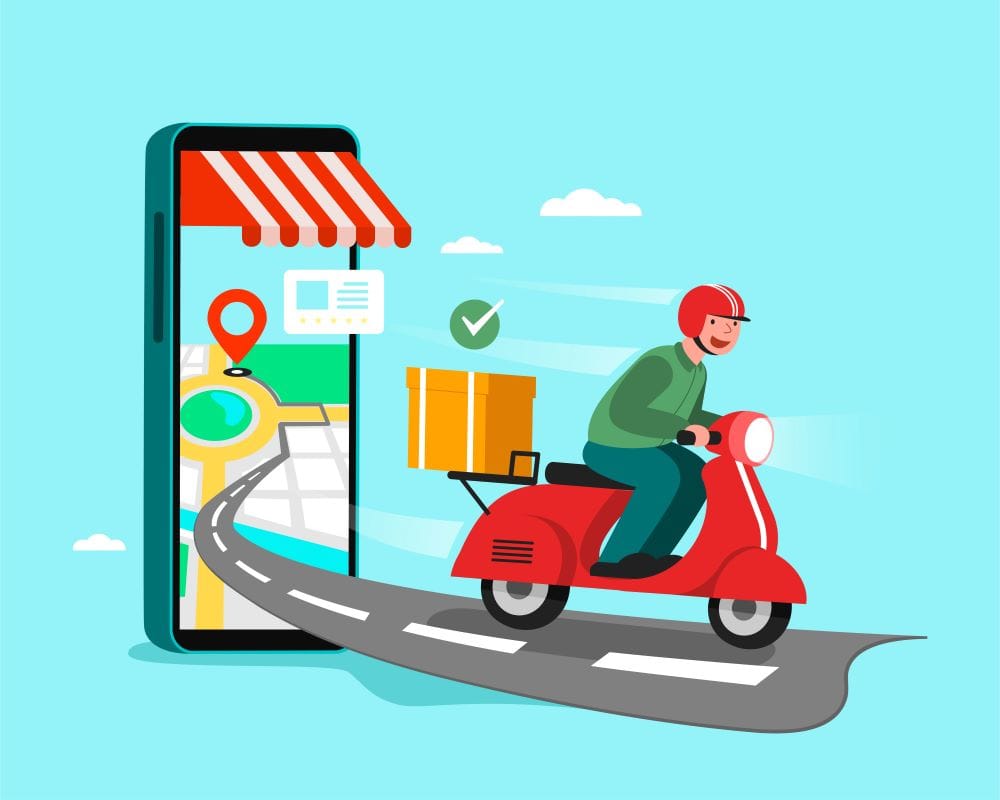Building an app like DoorDash is no doubt an exciting venture. However, it’s important to remember that the costs of development can quickly add up.
For in-depth insights on various aspects of building a food delivery app, such as the features, functionalities, and monetization options; and the DoorDash business model, market trend, and more, keep reading.

In this blog post, let’s explore some crucial steps you can take to minimize development costs while building an app like DoorDash.These steps will help you keep your development journey as cost-effective as possible, without compromising on the quality and functionality of your app.
Define a Clear MVP (Minimum Viable Product)
Avoid Impacting Initial App Development:
It’s critical to establish your food delivery app’s MVP. Identify core features and functionalities central to launching your app and nothing more. This will keep unnecessary development costs down and allow for a quicker app launch. The sooner your app is in users’ hands, the sooner you’ll receive critical user feedback that you can use to inform future development.
For example, instead of adding complex user customization right off the bat, it could be beneficial to simplicity ordering, real-time tracking, and secure payment integration. This gives you a working, user-friendly app—without sinking time and resources into non-essentials features.
Conduct Market Research Thoroughly:
Thorough market research is invaluable. Research current competition and user expectations—what features make a successful food delivery app, like DoorDash, for example. This will ensure that you’re including what’s most effective, so that you can spend your resources where they’ll be most effective.
But researching should not stop at feature sets. Also research your target audience—what are their behaviors, preferences, and pain points? A well-optimized app should immediately strike a chord with a user and their needs, reducing the burden on costly iterations later in your development process.
Choose the Right Development Approach:
Consider various development approaches—such as native development and cross-platform development, and select the approach that suits your requirements and budget. Cross-platform development (using frameworks like React Native, or Flutter) is a cost-effective option, allowing you to develop for multiple platforms in one go. It saves both time and money, as you do not require separate teams for iOS and Android development. This streamlines development and obviates the need for duplicative effort. However, native development might be more suitable, depending on your specific requirements. Weigh the pros and cons of each approach, and make a decision based on your budget and requirements.
Optimize Resource Allocation:
Evaluate your development team’s skills and expertise. Identify areas where you may need to outsource, or hire freelancers to reduce costs. Leverage your team’s strengths, and allocate resources wisely, to avoid any unnecessary expenses.
For instance, if your development team is good at frontend development, consider outsourcing backend development tasks to specialists in the field—so you make the most efficient use of available resources, shorten your overall development time, and decrease your expenses.
Agile Development Methodology:
Adopting an Agile development methodology is a great way to minimize costs and ensure efficient development. By breaking up the project into a series of smaller, more manageable tasks, it’s possible to ensure that regular feedback and adjustments can be incorporated. By doing this, the chance for expensive re-work can be dramatically reduced.
By following Agile principles, you can ensure that developers, designers, and stakeholders are on the same page at all times. Frequent iterations, and regular communication, can ensure that everyone is looped-in, and there’s less chance of misunderstandings, or expensive, last-minute changes. Apart from anything else, it means that bug fixing is a more straightforward process, and that feature prioritization is a much smoother and less painful one. Both of which can save significant sums of money over the course of a development project.
Prioritize Essential Features:
Avoid feature creep by prioritizing essential features that provide the core functionality of your app. By focusing on features that are necessary during the initial stages, you’ll be able to reduce development time, and therefore costs. Additional features can be added later, after you’ve gained regular user feedback or determined that there’s market demand. Prioritization is vital to avoiding the allocation of resources into non-essential features, which can not only increase costs but also deliver little extra value to users, and can dramatically slow down processes. By launching with a focused set of core features, and ensuring that the next development priorities chosen are the ones that will deliver maximum user engagement, you can emphasize a feature set that will deliver maximum value for the time you’ve spent developing it.
Reuse Existing Solutions:
Leverage existing solutions and third-party integrations to reduce development time and costs. APIs and SDKs can often provide ready-made solutions for common functions such as user authentication, payment processing, geolocation, and notifications. Rather than building your app from the ground up, these integrations enable your development team to focus on tailoring and customizing the app for your needs. This approach translates to less development time, lower costs, and a decreased likelihood of errors caused by reinventing the wheel.
Regular Testing and Quality Assurance:
Implement a robust testing and quality assurance regimen throughout development. By identifying and resolving issues early on, you can guarantee that your app will not suffer from expensive bugs or usability issues when it is deployed. This saves the enormous expense and headache of post-launch bug fixing as well as customer dissatisfaction.
Thorough testing and quality assurance ensures that your app will work as expected and remain reliable. By conducting extensive functional testing, user acceptance testing, and performance testing, you can catch and resolve any issues early on. Such prepwork in the beginning often amounts to thousands of dollars saved in post-launch bug fixing and customer support.
Optimize Server Infrastructure:
While app scaling is crucial for success, it’s important to optimize your server infrastructure based on anticipated usage. Over-provisioning servers will result in unnecessary expenses, so scale server resources in line with current demand and with an eye to future growth.
By closely monitoring server usage and scaling resources dynamically, you can avoid excessive costs while your app is in its nascent stages. The elasticity of cloud-based infrastructure providers can help you effectively manage costs as your app gains traction.
Continuous improvement and iteration:
Listen to user feedback and iterate on your product post-launch to ensure you’re driving value-driven updates with a close eye on costs. Regularly scan for new technology and market trends to ensure you’re staying competitive, and avoid overspending on new development efforts.
By adopting a mindset of continuous improvement, you’re able to enhance user experience, ease pain points, and ensure that your app outshines your competitors. Leverage user feedback, analytics, and market research as your app drives toward enhancements. Not only will it ensure that you’re only focusing development hours on the most impactful and valuable improvements, but it will also ensure you’re not incurring costs until your app is ready to address them.
Conclusion
It is all about finding a balance between delivering a high-quality product and managing development costs effectively, when you want to build an app like DoorDash. The steps outlined in this blog post are crucial to this process; they will help you minimize costs without sacrificing the overall functionality or user experience of your app. Keep in mind that this is an ongoing process; it’s up to you to constantly refine and improve to stay within your budget and code your way to the leader of the on-demand food delivery market.











